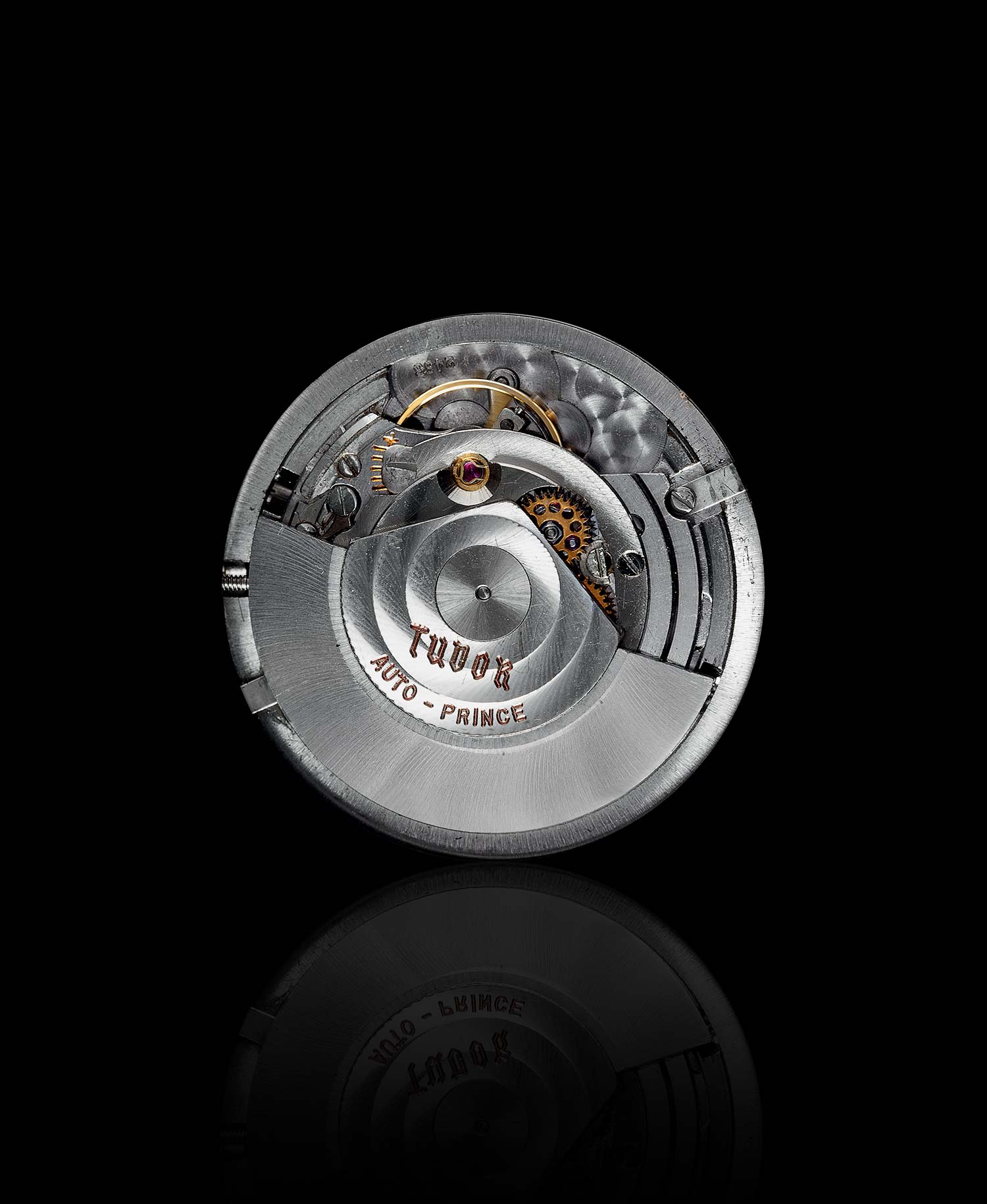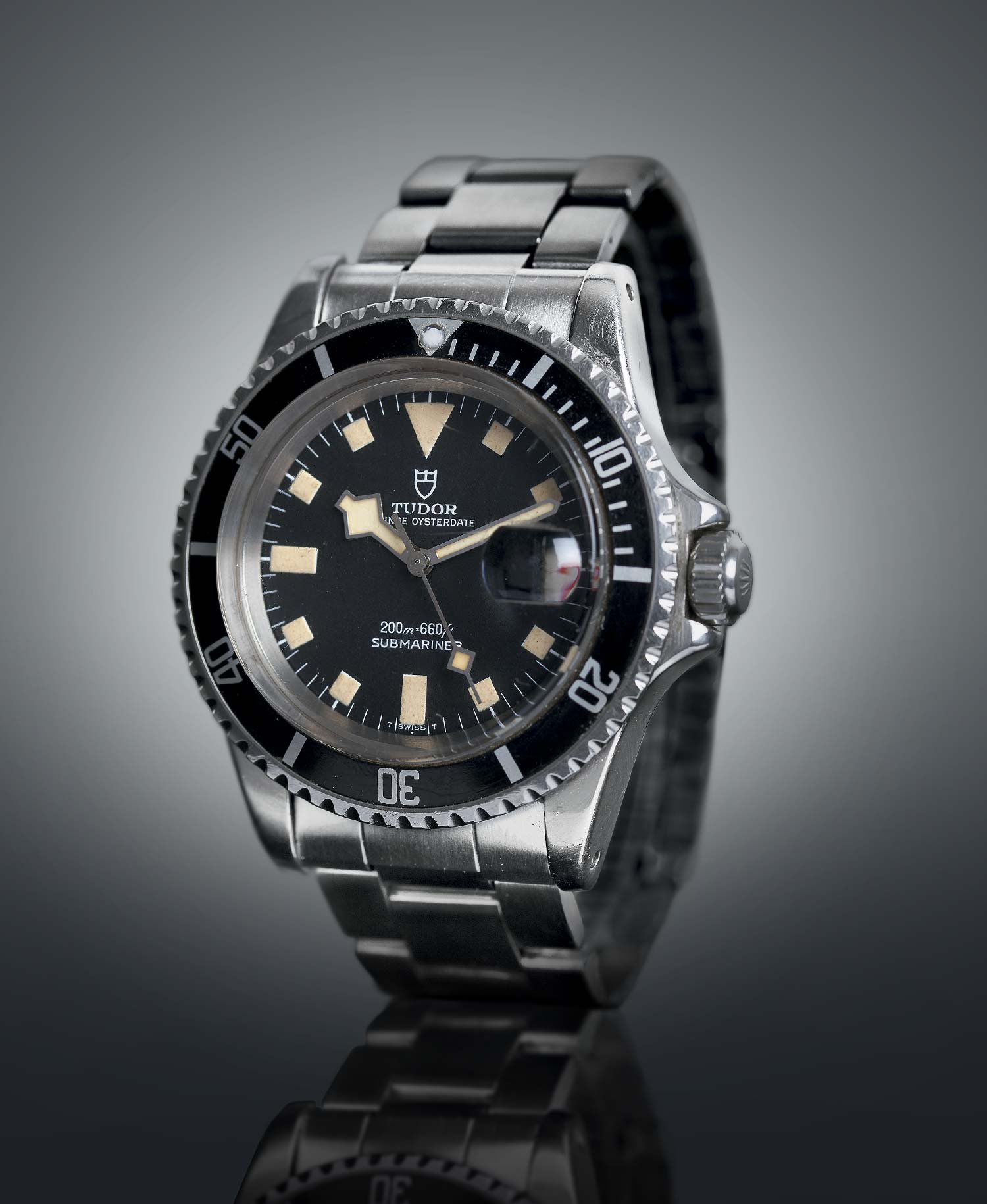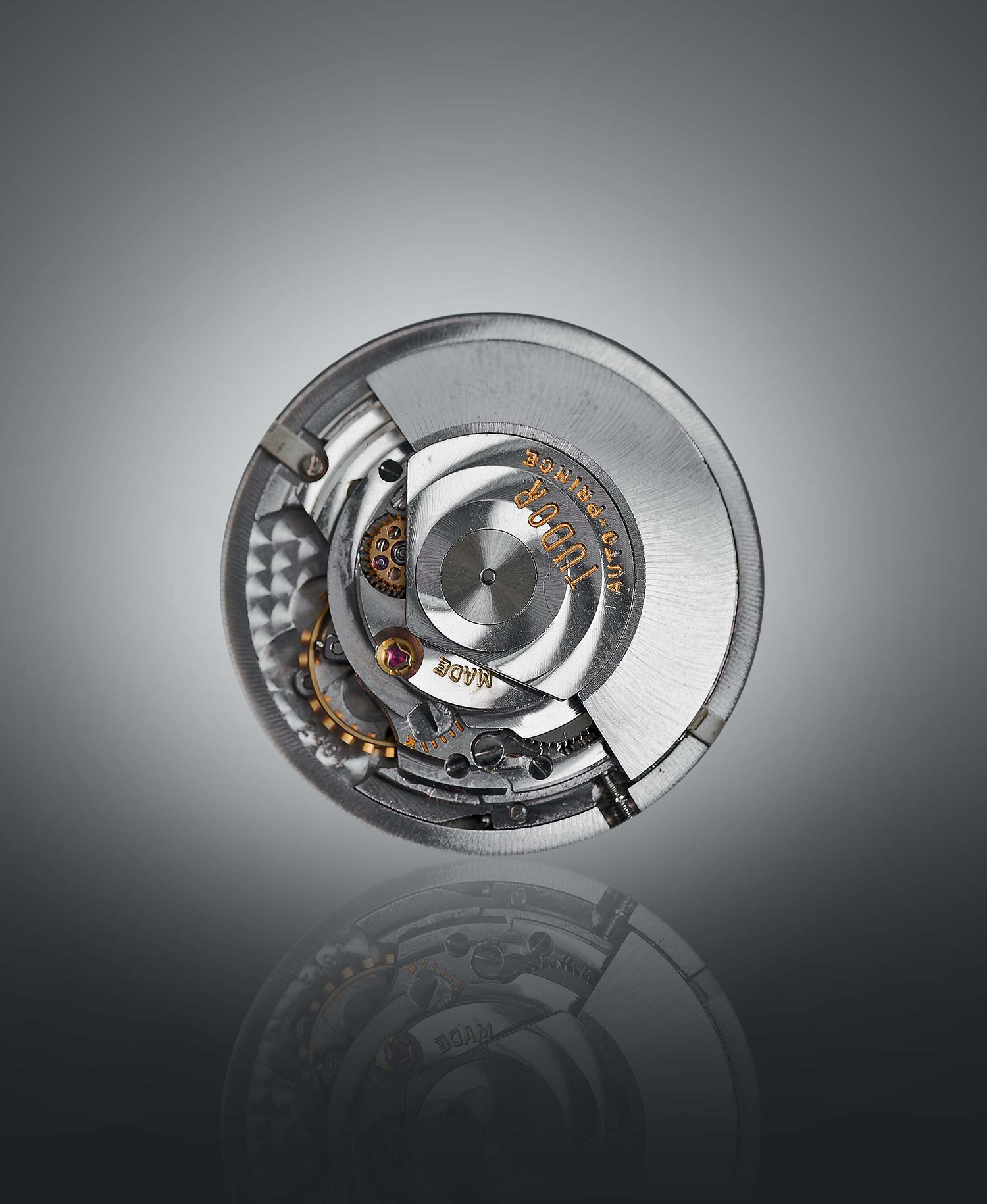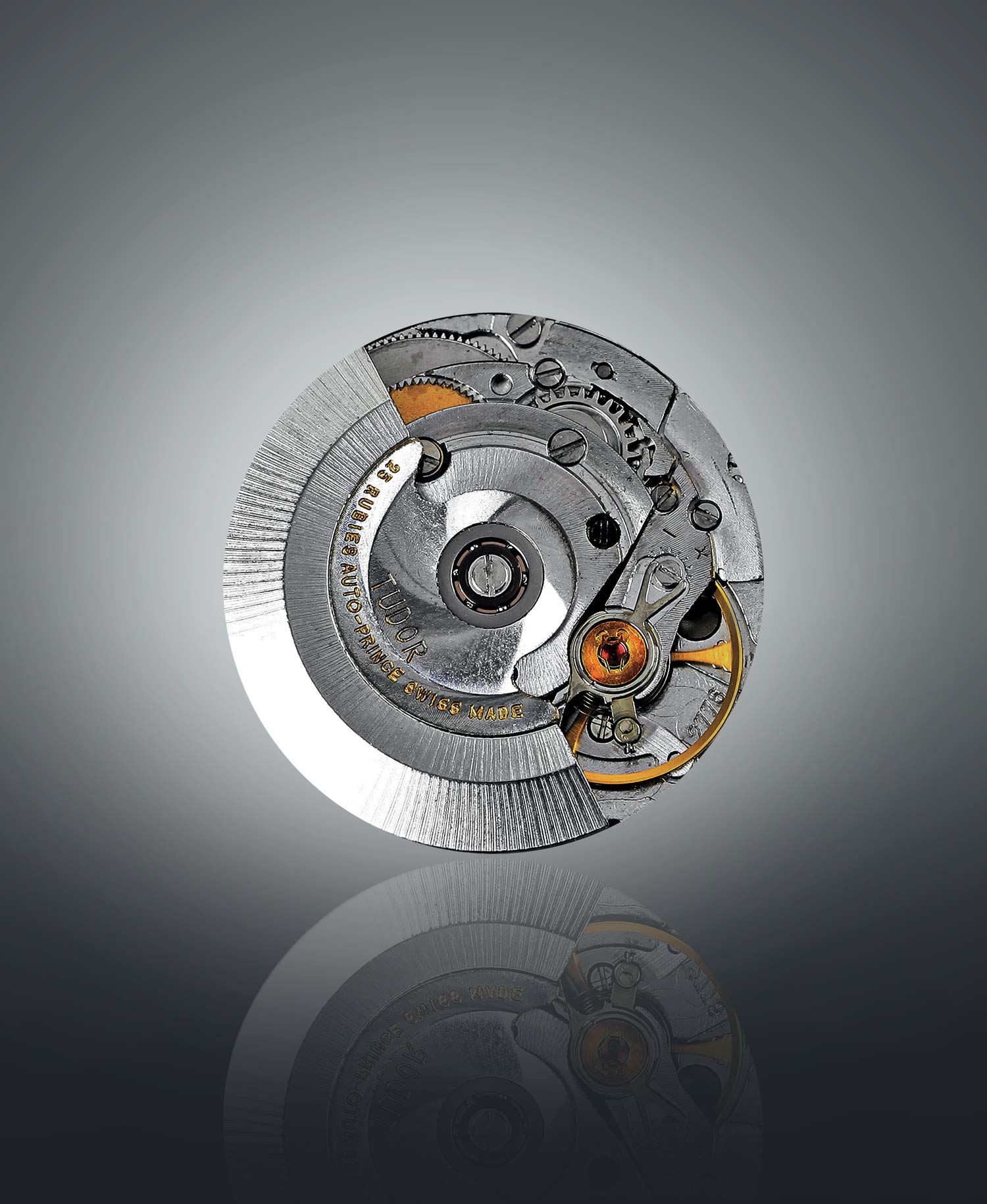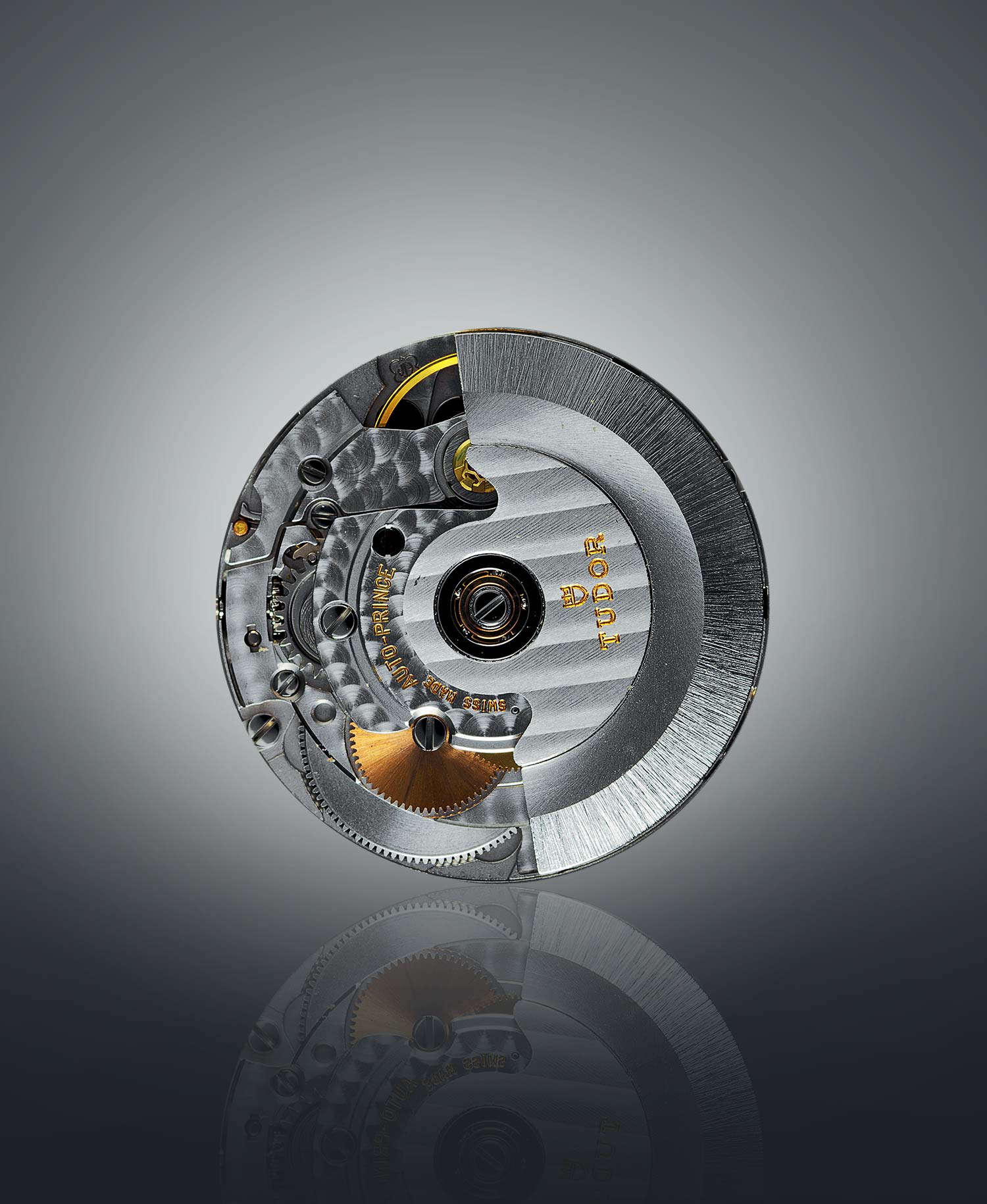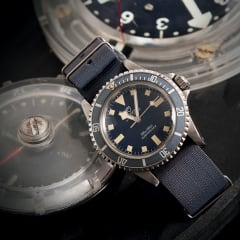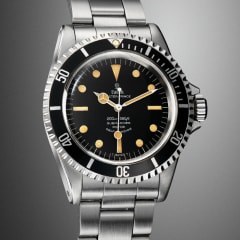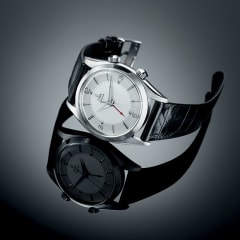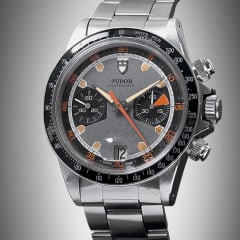Tudor historyDivers' watches: From 1969 to 1999
The year 1969 saw the dawn of the second era of the TUDOR Submariner’s history, which would last until 1999, the date of its last appearance in the catalogue. While the general foundations of the product were laid by the 7900 series, its evolution continued. From a technical point of view, the movements used until then were replaced by ETA self-winding movements. Aesthetically, 1969 saw the TUDOR Submariner present a famous new face. Developed for the explicit needs of diving, it was characterised by unique dials with square hour markers and matching hands, known to collectors by the name “snowflakes”. It remained in the catalogue until 1981. As of 1976, models with smaller case diameters also appeared in the catalogue.
The last years of the TUDOR Submariner line would also witness significant innovations with the introduction of highly resistant sapphire crystals, directional bezels with notching, as well as dial and bezel design variations.
In total, from 1969 to 1999, more than 20 different references with numerous variations, all retaining the principal TUDOR Submariner characteristics, would be produced.
1969 TUDOR OYSTER PRINCE SUBMARINER 7016
In the 1969 catalogue, two new TUDOR Submariner references appeared, the 7016 and 7021. With them began the second generation of TUDOR divers’ watches. The example of reference 7016 dating from 1969 presented here shows the detail of certain characteristics, the most visible being the dial and hands. Punctuated with large and highly visible square-shaped hour markers, in place of the rose logo it displayed a shield, symbol of resistance and reliability. Its hands, nicknamed “snowflakes” by collectors, were enhanced with luminous squares intended to optimise readability. This new face was highly recognisable and contributed to the TUDOR identity.
The other major change introduced on reference 7016 was the replacement of the self-winding Calibre 390 used until then by an ETA 2483 movement having the same frequency as its predecessor, 18,000 beats per hour. The watch’s lines remained the same as those established by the preceding generation, a 39 mm case signed Rolex, waterproof to a depth of 200 metres with round crown guards, a screw-down crown signed Rolex, a 60-minute graduated bidirectional rotatable bezel, marked in 5-minute intervals with one-minute subdivisions between the 0 and 15 marks, and a folding link Oyster-type bracelet, signed Rolex. The Plexiglas crystal was no longer domed but flat, thick and prominent.
1969 TUDOR prince oysterdate submariner 7021
The TUDOR Prince Oysterdate Submariner reference 7021 appeared at the same time as the 7016, but in addition offered a calendar function at 3 o’clock. Its Cyclops-type Plexiglas crystal was the same type as that of its contemporary. In addition, it included a magnifying lens placed over the date aperture for easier reading. The example presented here has a black dial with so-called “snowflakes” hour markers and hands. Its date disc was two-coloured: black for the uneven numbers and red for the even numbers.
The movement of reference 7021 was the self-winding ETA Calibre 2484 with a date disc, polished decorations and circular Côtes de Genève finishings. Its bracelet was the Oyster-type reference 7836 with folding links and the Rolex signature.
1975 OYSTER PRINCE SUBMARINER 9401/0
In the mid-1970s, reference 7016 was replaced by reference 9401/0, which welcomed a higher-performance movement with the ETA Calibre 2776, notably allowing more precise time-setting thanks to a stop-seconds function. The combinations of dials and bezel available for this reference total four in number: blue or black with “snowflakes” hands and hour markers, as well as blue or black with characteristic Submariner hands and triangular and round hour markers. The 1976 example presented here was fitted with a blue dial and square-ended hands.
Two bracelets were offered on this reference: a folding link Rolex Oyster reference 7836/0 with a classic folding clasp and a Rolex Oyster reference 9315/0, which was the same bracelet but with a “Fliplock” folding clasp, an extension link system which meant the length of the bracelet could be adjusted to fit over a diving suit. The diameter of the watch remained 39 mm and the lines of its case did not change.
1989 TUDOR PRINCE OYSTERDATE SUBMARINER 79090
As of 1989 reference 79090, of which a 1993 example is shown here, replaced the undated TUDOR Submariner, which as of then no longer appeared in the catalogue. The dials offered with this reference were a choice of blue or black with a matching bezel. At 6 o’clock, they displayed a reminder of their waterproofness guarantee, and at 12 o’clock the shield logo. They featured Submariner-type hands. While the general design of the dial recalled that of the first-generation TUDOR Submariners, the hour markers placed at 6 and 9 o’clock were no longer rectangular but triangular.
The 39 mm case, waterproof to a depth of 200 metres, housed a self-winding ETA Calibre 2824-2. Its Oyster-type steel bracelet, reference 9315/0, had folding links and a “Fliplock” folding clasp; it bore the TUDOR logo.
1995 TUDOR PRINCE DATE SUBMARINER 79190
Reference 79190 arrived in the catalogue in 1995. The last TUDOR Submariner reference produced, it included many interesting developments, including a sapphire crystal with a Cyclops lens, round hour markers, and a unidirectional rotatable bezel with notching. Its dial came in blue or black versions. The bracelet was a three-link Oyster-type with the TUDOR logo. The 39 mm case diameter remained unchanged. The model shown here dates from 1997 and presented a particularity unseen until that year, in the form of a disc bezel with an engraved polished steel insert.

